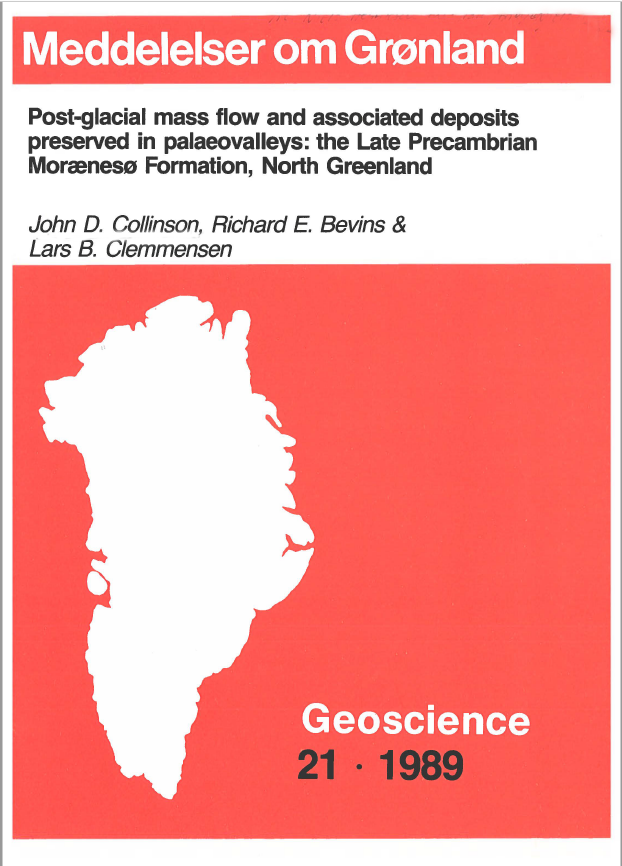Post-glacial mass flow and associated deposits preserved in palaeovalleys: the Late Precambrian Morænesø Formation, North Greenland
DOI:
https://doi.org/10.7146/moggeosci.v21i.139981Abstract
The Morænesø Formation is of Late Proterozoic age and is preserved as the fills of a series of palaeovalleys. The formation is made up of conglomerates and sandstones of fluvial and aeolian origin and of a series of breccias which resulted almost entirely from gravitational mass movement down the sides of the palaeovalleys. At the most extensive exposure, examples of local rock-fall, rock-slide and matrix-poor breccia flows are observed close to the valley side. Their movement was probably favoured by freeze-thaw mechanisms. More widespread diamictites overlie valley-floor sands and were deposited under water-saturated conditions as a series of mass flows apparently from the sides of the palaeovalleys. The diamictites contain far-travelled clasts, some of which show striated surfaces suggesting a phase of glacial transport prior to final emplacement. Only at one locality does diamictite directly overlie the basal unconformity and suggest possible in situ till. The diamictite sheets are overlain by a widespread but thin dolomite unit which shows spectacular stromatolitic domes. At other localities in the area, valley fills show evidence of floating lake ice with dropstone pebbles occurring in thin bedded sandstones and mudstones.
The palaeovalleys are thought to have been eroded by valley glaciers which, on retreat, left substantial volumes of till on the valley sides and possibly in tributary valleys. Any moraine deposited on the valley floor was eroded by fluvial activity priorto a phase of alluvial and aeolian aggradation which coincided with local mass movement in cold conditions. Catastrophic rainfall, probably related to a generally wetter palaeoclimate, remobilised lateral moraines and other deposits and emplaced them on the valley floor. Deep weathering of dolerites at the unconformity suggests an ameliorated climate and a substantial time gap prior to these mass flows. A body of shallow water, established on the valley floor soon after these events, led to deposition of stromatolitic dolomite.
The Morænesø Formation represents remarkable preservation of a complex series of local glacial and post-glacial deposits in an upland setting compared with the more widespread lowland or marine tillites of Late Proterozoic age in other areas.

Downloads
Published
How to Cite
Issue
Section
License
Coypyright by the authors and the Commision for Scientific Research in Greenland / Danish Polar Center. No parts of the publications may be reproduced in any form without the written permission by the copyright owners.

